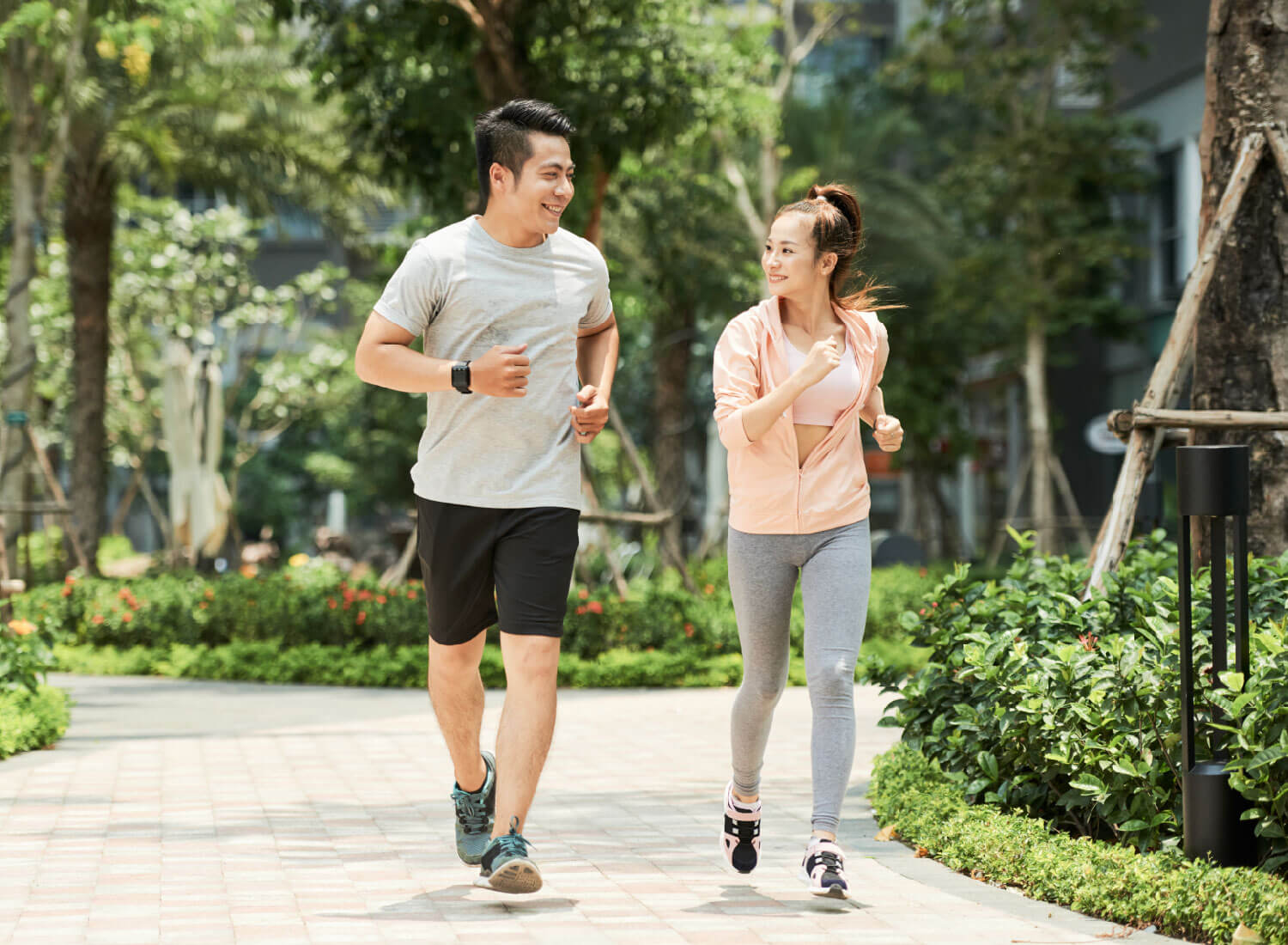The blood circulatory system, also known as the cardiovascular system, is vital to life. At the core of this system is the all-important heart, tirelessly pumping blood at 60-90 beats per minute to the rest of the body. Blood is then carried via conduits known as vessels throughout the body, supplying blood to every organ and system. Blood circulation delivers oxygen, takes away waste products, fights off infections and maintains temperature in the body, among other functions. Hence, it is clear that having good blood circulation is essential to obtain optimal health. Here are 7 easy and proven ways to improve your blood circulation:
7 ways to improve blood circulation
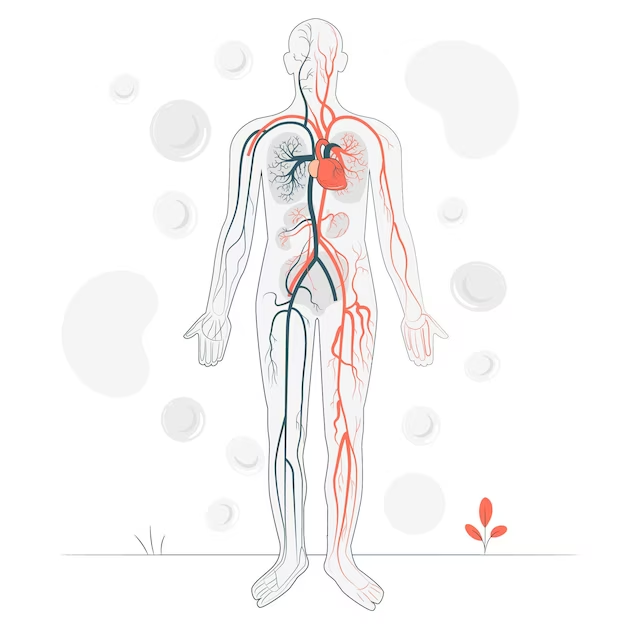
Physical activity is the most common recommendation by doctors to improve blood flow in the body. Research shows that when you exercise, your body reacts by secreting chemicals known as hormones to stimulate blood circulation. Some of the things that happen encourage blood circulation1:
- your heart is trained to pump faster and stronger to supply blood effectively to your muscles
- your blood vessels relax to allow blood to pass through smoothly

The Ministry of Health Malaysia recommends at least 30 minutes of aerobic exercise on at least 5 days per week2. Brisk walking, jogging, swimming and cycling which only require little equipment to start are examples of easy ways to boost your blood circulation.
These workouts will also double up as means to achieve weight loss, which can further improve blood circulation3. So it's time to get moving, literally.
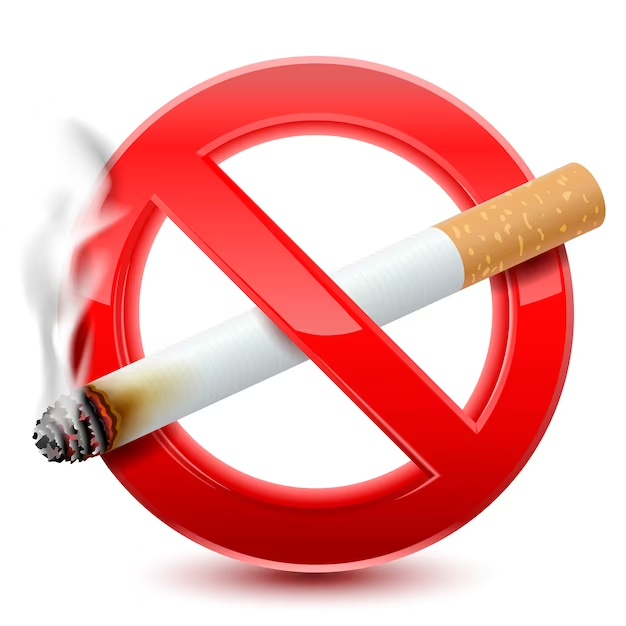
You are what you eat. There is plenty and a variety of food you should eat to improve blood circulation. Choose iron-rich foods like spinach, legumes, tofu, meat (in moderation) and fish to ensure a balanced diet that enhances blood circulation6.
Flavonoids are important natural compounds found in diverse foods and plants. Research demonstrates that the consumption of flavonoid antioxidants has abundant beneficial effects, one of which is improving blood circulation7.
Tea, citrus fruits, berries, and onions are some of the natural foods rich in flavonoids, and they can also be found in a good amount in herbal supplements like Ginkgo biloba.
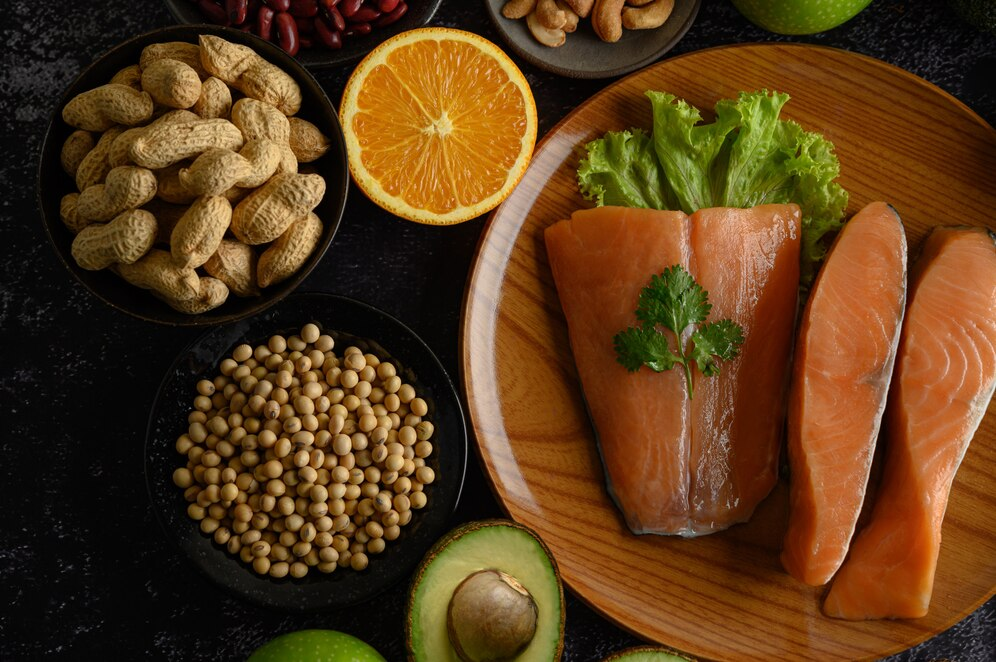
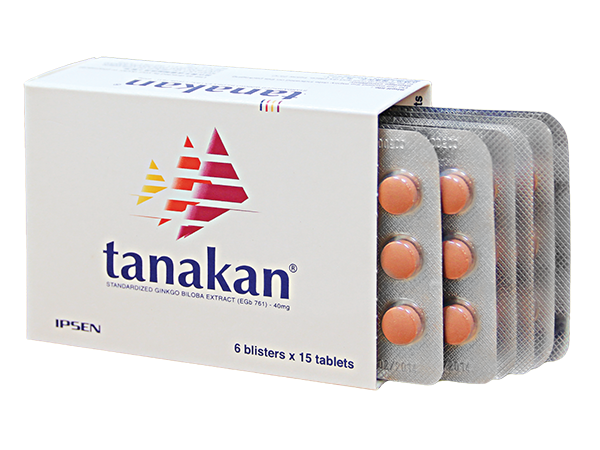
Tanakan® is a standardized Ginkgo biloba extract (EGb761) which contains 22.0% – 27.0% of flavonoids expressed as flavone glycosides, and 5.4% – 6.6% of terpene lactones, among other constituents. According to contemporary scientific studies8 and sources in the MyHEALTH Portal by the Ministry of Health Malaysia, these two compounds in Ginkgo biloba extract improve blood circulation by widening and protecting the blood vessels9.
Studies also suggest that eating a balanced diet to include fatty fish like salmon, mackerel, herring, sardines, and anchovies which contain omega-3 fatty acids, fruits and vegetables like pomegranate, beetroot, and garlic, is beneficial to vascular function10 and improve blood circulation11, 12, 13.
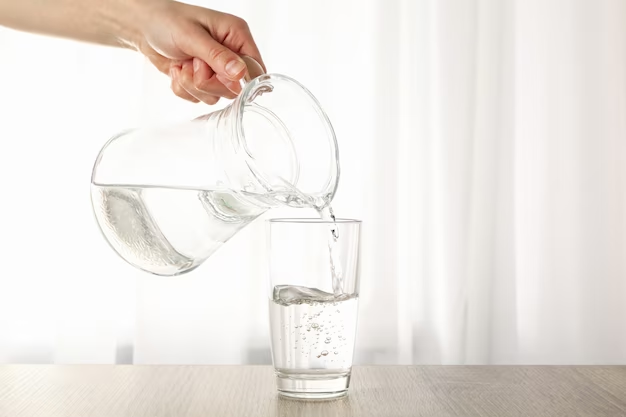
There is no life without water. 60% of the human body is made up of water, and water contributes to more than half of the components of circulating blood. Keeping yourself hydrated makes it easier for blood to flow to various organs and is important in improving blood circulation14. The Ministry of Health Malaysia recommends that we drink 6-8 glasses (1.5-2 litres) of water every day15.
Many Malaysians are guilty of leading sedentary behaviour at work. In fact, approximately 8 in 10 Malaysians spend at least 6 hours of their job sitting at a desk, according to a survey16. The problem is when you do that, blood pools in your legs and circulation is restricted. Research in the US found that prolonged sitting significantly reduces blood flow to the legs, but can be restored by a 10-minute walk17. Scientists have studied that simple tips like stretching18 and even intermittently standing up at your desk19 can immensely help improve blood circulation.

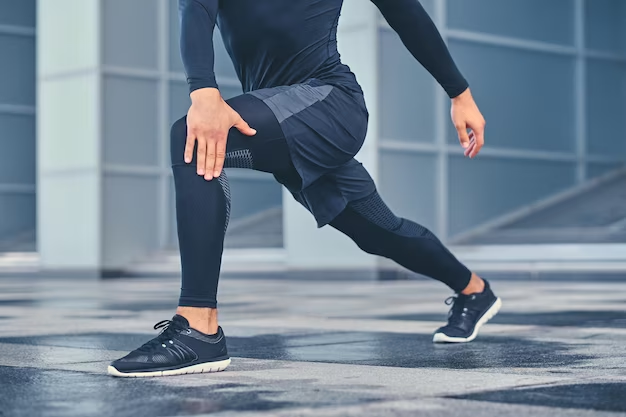
Compression stockings have been around for decades and are often prescribed medically to increase blood circulation20. This concept of compression therapy to optimize blood flow has expanded into sports and is also used by athletes to improve blood flow and help them recover faster. A wide range of compression garments including socks, shorts and tights are proven to facilitate blood circulation when selected appropriately with the help of professionals21.
If you have any symptoms, such as numbness and tingling in the hands and feet, cold hands and feet, fatigue, tiredness, or dizziness, do not ignore them. You should consult a qualified professional healthcare provider, doctor or physician to help you with the diagnosis and treatment prescription.

The information, including but not limited to, text, graphics, images and other material contained in this article is intended for your general knowledge and informational purposes only. No material on this site is intended to be a substitute for professional medical advice, diagnosis or treatment for specific medical conditions. You should not use this information to diagnose or treat a health problem or disease without consulting with a qualified healthcare provider. Always seek the advice of your medical doctor or qualified healthcare provider with any questions you have regarding a medical condition or treatment before undertaking them, and never disregard professional medical advice or delay in seeking it because of something you have read in this article.
References:
- Duncker, D. J., & Bache, R. J. (2008). Regulation of coronary blood flow during exercise. Physiological reviews, 88(3), 1009–1086. https://doi.org/10.1152/physrev.00045.2006
- National Coordinating Committee on Food and Nutrition. Malaysian Dietary Guidelines 2020. Key Message 3: Be Physically Active Everyday. Putrajaya: Ministry of Health Malaysia. https://hq.moh.gov.my/nutrition/wp-content/uploads/2021/07/Web%20MDG.pdf
- Losing Belly Fat, Whether From a Low-Carb or a Low-Fat Diet, Helps Improve Blood Vessel Function. (2012, March 13). Johns Hopkins Medicine. https://www.hopkinsmedicine.org/news/media/releases/losing_belly_fat_whether_from_a_low_carb_or_a_low_fat_diet_helps_improve_blood_vessel_function
- Kondo, T., Hayashi, M., Takeshita, K., Numaguchi, Y., Kobayashi, K., Iino, S., Inden, Y., & Murohara, T. (2004). Smoking cessation rapidly increases circulating progenitor cells in peripheral blood in chronic smokers. Arteriosclerosis, thrombosis, and vascular biology, 24(8), 1442–1447. https://doi.org/10.1161/01.ATV.0000135655.52088.c5
- American Cancer Society (2020, November 10) Health Benefits of Quitting Smoking Over Time.https://www.cancer.org/cancer/risk-prevention/tobacco/benefits-of-quitting-smoking-over-time.html
- Metivier, F., Marchais, S. J., Guerin, A. P., Pannier, B., & London, G. M. (2000). Pathophysiology of anaemia: focus on the heart and blood vessels. Nephrology, dialysis, transplantation : official publication of the European Dialysis and Transplant Association - European Renal Association, 15 Suppl 3, 14–18. https://doi.org/10.1093/oxfordjournals.ndt.a027970
- Rees, A., Dodd, G. F., & Spencer, J. P. E. (2018). The Effects of Flavonoids on Cardiovascular Health: A Review of Human Intervention Trials and Implications for Cerebrovascular Function. Nutrients, 10(12), 1852. https://doi.org/10.3390/nu10121852
- Kang, J. M., & Lin, S. (2018). Ginkgo biloba and its potential role in glaucoma. Current opinion in ophthalmology, 29(2), 116–120. https://doi.org/10.1097/ICU.0000000000000459
- Hanafi, N. I. bt. (2014, August 11). Ginkgo Biloba. PORTAL MyHEALTH. Retrieved from http://www.myhealth.gov.my/en/ginkgo-biloba-2/
- Colussi, G., Catena, C., Novello, M., Bertin, N., & Sechi, L. A. (2017). Impact of omega-3 polyunsaturated fatty acids on vascular function and blood pressure: Relevance for cardiovascular outcomes. Nutrition, metabolism, and cardiovascular diseases : NMCD, 27(3), 191–200. https://doi.org/10.1016/j.numecd.2016.07.01
- Trexler, E. T., Smith-Ryan, A. E., Melvin, M. N., Roelofs, E. J., & Wingfield, H. L. (2014). Effects of pomegranate extract on blood flow and running time to exhaustion. Applied physiology, nutrition, and metabolism = Physiologie appliquee, nutrition et metabolisme, 39(9), 1038–1042. https://doi.org/10.1139/apnm-2014-0137
- Domínguez, R., Maté-Muñoz, J. L., Cuenca, E., García-Fernández, P., Mata-Ordoñez, F., Lozano-Estevan, M. C., Veiga-Herreros, P., da Silva, S. F., & Garnacho-Castaño, M. V. (2018). Effects of beetroot juice supplementation on intermittent high-intensity exercise efforts. Journal of the International Society of Sports Nutrition, 15, 2. https://doi.org/10.1186/s12970-017-0204-9
- Mahdavi-Roshan, M., Mirmiran, P., Arjmand, M., & Nasrollahzadeh, J. (2017). Effects of garlic on brachial endothelial function and capacity of plasma to mediate cholesterol efflux in patients with coronary artery disease. Anatolian journal of cardiology, 18(2), 116–121. https://doi.org/10.14744/AnatolJCardiol.2017.7669
- Watso, J. C., & Farquhar, W. B. (2019). Hydration Status and Cardiovascular Function. Nutrients, 11(8), 1866. https://doi.org/10.3390/nu11081866
- National Coordinating Committee on Food and Nutrition. Malaysian Dietary Guidelines 2020. Key Message 12: Drink Plenty of Water Daily. Putrajaya: Ministry of Health Malaysia. https://hq.moh.gov.my/nutrition/wp-content/uploads/2021/07/Web%20MDG.pdf
- Malaysians just love sitting at their desk. (2016, May 19). Free Malaysia Today. https://www.freemalaysiatoday.com/category/nation/2016/05/19/malaysians-just-love-sitting-at-their-desk/
- Restaino, R. M., Holwerda, S. W., Credeur, D. P., Fadel, P. J., & Padilla, J. (2015). Impact of prolonged sitting on lower and upper limb micro- and macrovascular dilator function. Experimental physiology, 100(7), 829–838. https://doi.org/10.1113/EP085238
- Bisconti, A. V., Cè, E., Longo, S., Venturelli, M., Coratella, G., Limonta, E., Doria, C., Rampichini, S., & Esposito, F. (2020). Evidence for improved systemic and local vascular function after long-term passive static stretching training of the musculoskeletal system. The Journal of physiology, 598(17), 3645–3666. https://doi.org/10.1113/JP279866
- Barone Gibbs, B., Kowalsky, R. J., Perdomo, S. J., Taormina, J. M., Balzer, J. R., & Jakicic, J. M. (2017). Effect of alternating standing and sitting on blood pressure and pulse wave velocity during a simulated workday in adults with overweight/obesity. Journal of hypertension, 35(12), 2411–2418. https://doi.org/10.1097/HJH.0000000000001463
- Rabe, E., Partsch, H., Hafner, J., Lattimer, C., Mosti, G., Neumann, M., Urbanek, T., Huebner, M., Gaillard, S., & Carpentier, P. (2018). Indications for medical compression stockings in venous and lymphatic disorders: An evidence-based consensus statement. Phlebology, 33(3), 163–184. https://doi.org/10.1177/0268355516689631
- O'Riordan, S. F., McGregor, R., Halson, S. L., Bishop, D. J., & Broatch, J. R. (2023). Sports compression garments improve resting markers of venous return and muscle blood flow in male basketball players. Journal of sport and health science, 12(4), 513–522. https://doi.org/10.1016/j.jshs.2021.07.010



